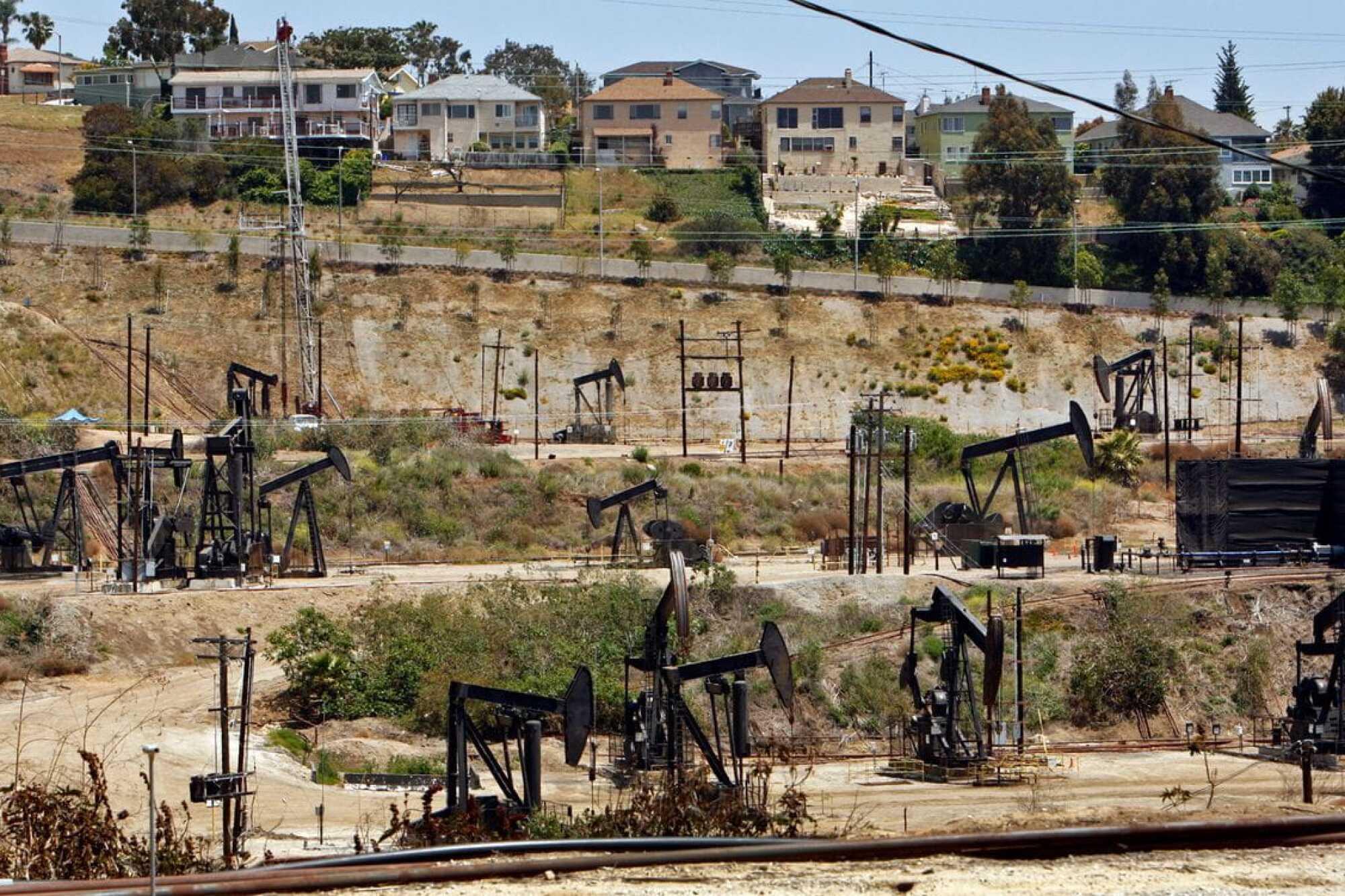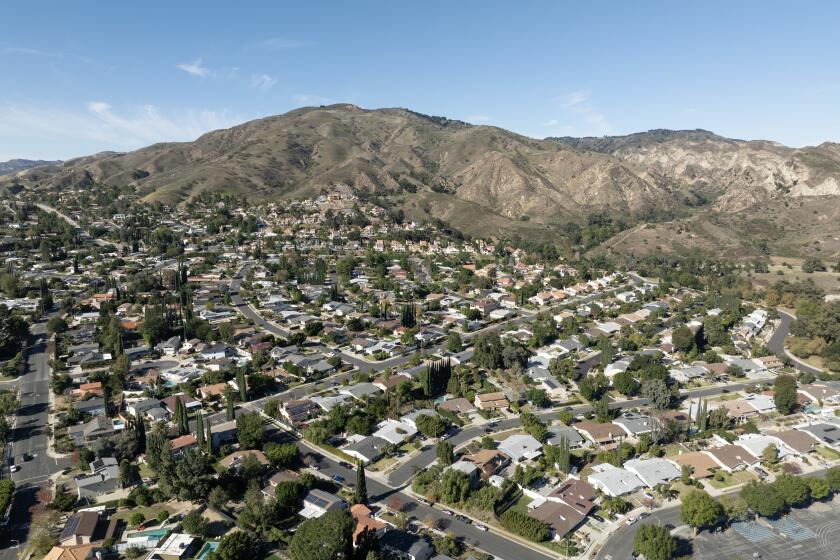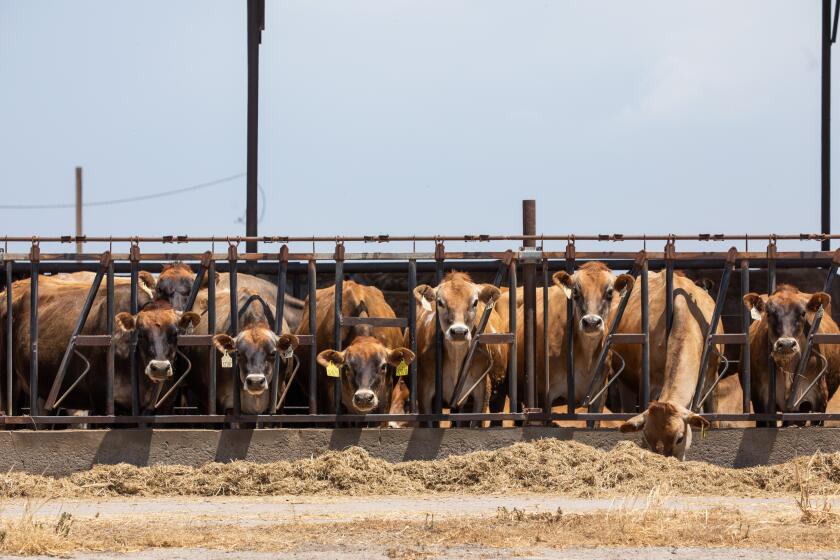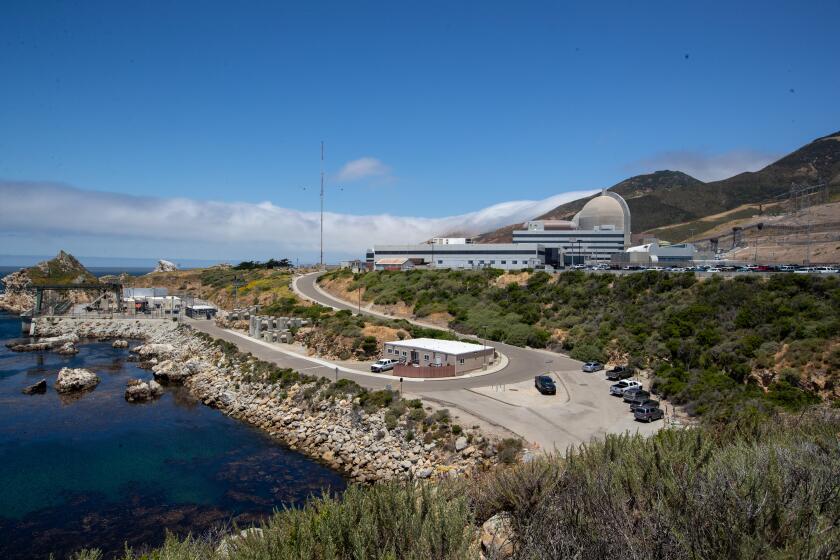
- Share via
Culver City has struck a deal with one of California’s largest oil producers to end petroleum extraction and plug all wells within the city limits by the end of the decade — an agreement that environmentalists say could serve as a model for other municipalities.
After two years of negotiations, Culver City and Sentinel Peak Resources reached a settlement agreement to ban oil drilling in the city’s portion of the Inglewood oil field. The agreement requires the company to seal its 38 Culver City wells by 2030, ensuring that taxpayers are not responsible for footing those costs.
The announcement comes as environmental activists focus increasing attention on the health and financial risks of idle oil wells in Southern California, a region once dominated by oil derricks and pumpjacks. The agreement also means that Culver City will be among the first communities in the region to end fossil fuel production and cap its wells.
“It’s a win for public health. It’s a win for our communities. And it’s an inspiration for others,” said Meghan Sahli-Wells, an environmental advocate and former Culver City mayor. “There are 38 oil wells in Culver City. Those will be 38 fewer pockets of poison in our community.”
Unusual chemical reactions at L.A. County’s two largest landfills raise serious questions about the region’s long-standing approach to waste disposal.
More than a century of oil and gas drilling in California has left more than 100,000 wells unplugged, allowing them to leak planet-warming methane and dangerous chemicals, such as benzene.
The cost of properly closing these wells could run as high as $23 billion, according to a recent Sierra Club analysis. Some activists and state legislators argue that taxpayers could be on the hook for those capping expenses if oil companies fail to take responsibility.
Around 41,000 of California’s uncapped wells are classified as idle, meaning they haven’t produced any oil or gas in at least two years.
Three oil companies — Chevron, Aera Energy and California Resources Corp. — own two-thirds of these idle wells, according to Jasmine Vazin, an author of the report. Although the companies have recorded billions in profit in recent years, Vazin said they have been allowed to leave their wells unplugged indefinitely because there is no mandated timeline to cap inactive wells in California.
“These companies have been profiting at extreme rates from extracting California’s natural resources for over a century,” said Vazin, a Sierra Club senior organizer. “So we believe when you look at the global profits of these large entities and their parent companies, there is more than enough profit to cover the cost of cleanup of their legacy of pollution in California.”
California recently enacted legislation that requires oil companies to obtain a bond — a financial guarantee similar to an insurance policy — that would cover the full cost of plugging their wells. The state also collects idle well fees, which can run up to $1,500 a year for each inactive well.
But Vazin said that has done little to motivate oil producers, noting more than 12,000 wells in California have been idle for at least eight years.
“We have this issue where operators are sitting on thousands of idle wells and not doing anything about it. And so if there’s no policy change to really prompt and kind of force that cleanup at a much, much faster rate than is currently happening, we’re just creating this problem that just piles on top of itself,” Vazin said.
California has funneled billions of dollars toward curbing planet-warming gases from cows. Environmental experts say the state’s approach is flawed.
Other oil-producing states require companies to cap unused wells within a specific time period. Pennsylvania and West Virginia require companies to plug wells within a year of ceasing production. Colorado and North Dakota allow oil companies six months to plug their wells, if they have been inactive for a year.
In California, smaller energy companies have declared bankruptcy without closing their wells. This has left thousands of so-called orphaned wells, which have no owner responsible for plugging them, ultimately leaving the responsibility to state and local governments.
The Culver City agreement attempted to buck that trend when officials sought to end drilling in their slice of the sprawling Inglewood oil field, which has been in production since 1924.
The City Council originally passed an ordinance in 2021 that banned new drilling and required Sentinel Peak to cease oil extraction by November 2026. The settlement agreement enshrines many of those provisions, but it gives the company three more years to close its wells.
Under the agreement, the company must plug at least 15 wells by Dec. 31, 2027, and all remaining wells by Dec. 31, 2029.
Many environmental advocates lauded the deal, but others expressed disappointment that the city did not negotiate an earlier end to oil production.
“It’s great that Culver City made the critical decision to phase out oil drilling, but it’s disappointing Sentinel Peak Resources bullied the city into three more years of toxic air pollution and greenhouse gas emissions,” said Gladys Delgadillo, a senior organizer at the Center for Biological Diversity. “Sentinel spent millions of dollars trying to kill a health buffer protecting homes and schools from its dirty oil wells, so they can afford to quickly clean up their mess in Culver City.”
The California Public Utilities Commission has voted to extend operation of the Diablo Canyon nuclear power plant for five more years.
Just 10% of the Inglewood oil field falls within Culver City’s borders. The rest of the field occupies parts of Baldwin Hills, Ladera Heights, Inglewood and other neighboring communities.
On the heels of Culver City’s drilling ordinance, the Los Angeles City Council in December 2022 voted to ban new oil drilling and prohibited oil production within 20 years. Warren E&P, which operates drill sites in the city’s Wilmington neighborhood, sued the city a month later.
This litigation could put Los Angeles on a similar track as Culver City to orchestrate a deal with its oil producers to cap their wells.
Sahli-Wells, who grew up in Culver City in the 1980s, recalls pumpjacks in the background when she played at Culver City Park. After years of campaigning to end oil production in the city, she said she’s glad the next generation will no longer see oil production on the hillside along Jefferson Boulevard.
“I think it’s safe to say that we kind of created a model. I mean, you go from the 40,000 folks in Culver City to 4 million in L.A. It’s pretty exciting, right?”










